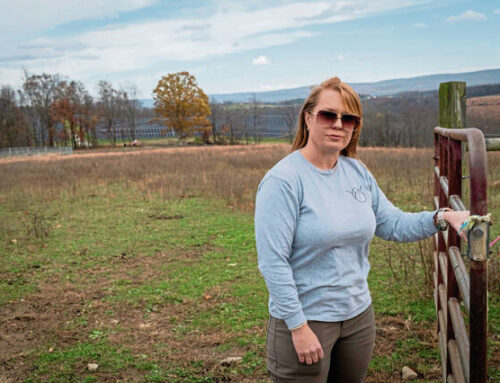Viewpoint: Why impact investing in the MENA region is poised for growth
May 30, 2025

The Middle East and North Africa (MENA) region is approaching a rare convergence of factors that make it one of the world’s most strategic opportunities for impact investment. With over $1trn (€878bn) in reconstruction needs and a $660bn annual SDG financing gap, the region demands urgent solutions, but also offers scalable innovations with global relevance.
While often viewed as a region of complex challenges, MENA is quietly proving itself as a laboratory for resilient, replicable and scalable solutions in climate, education, and inclusive employment. At the same time, the emergence of new investment tools, increased institutional commitments, and a maturing pipeline of social enterprises signal that the region is not just ready for capital, it is ready to deploy it effectively.
The demographic and environmental imperatives are stark. With more than 60% of its population under the age of 30, the region must create 300 million jobs by 2050 to fully capture its demographic potential. It is also one of the world’s most water-stressed regions, and includes countries still recovering from protracted conflict—Syria, Iraq, and Libya alone require over $600bn in funding for reconstruction.

What is often missed in these statistics is the innovation already underway. Take Flowless, a Palestinian company using AI-powered sensors to cut municipal water waste by 40%, or Darsel, an education technology company delivering low-bandwidth mathematics learning to over 200,000 students through WhatsApp. These are beyond proof-of-concept ventures. They are scalable models with applications in Africa, Asia, and beyond.
This transition from isolated innovation to investable pipeline has not been accidental. It reflects over two decades of groundwork by ecosystem builders—local and regional organisations that have worked to identify, fund, and grow early-stage social enterprises, even in the absence of mature capital markets.
Alfanar, the Arab region’s first venture philanthropy organisation, has quietly helped shape this ecosystem, for example. By providing patient capital, embedded technical support, and a discipline of impact measurement, Alfanar has helped over 50 social enterprises in Lebanon, Egypt, Jordan, and Palestine move from idea to scale. Our long-term commitment, which often spans three to five years per investment, has helped create the very pipeline that development finance institutions (DFIs), impact investors, corporates, and family offices are now turning toward.
To leverage this momentum and help socially-driven start-ups bridge the gap to commercial capital, Alfanar has launched an impact investment vehicle, Anara Impact Capital, to expand the funding offering to catalytic equity and debt investment to help an increasingly mature and sophisticated ecosystem.
Over the past five years, the capital ecosystem has also started to evolve. Sovereign wealth funds are integrating IRR thresholds into their development portfolios. The UAE alone has committed $35bn in Egypt through impact-aligned infrastructure investments. DFIs are testing blended finance vehicles, using first-loss guarantees to bring private investors into high-risk markets.
Family offices, which have traditionally been quite conservative, are adopting impact investment strategies, channelling capital towards social and economic priorities such as poverty alleviation, alongside green and tech ventures. The launch of ALTÉRRA, a $30bn catalytic capital platform at COP28, represents a new kind of anchor – one that de-risks climate and infrastructure deals for mainstream capital. It is also emblematic of a global shift—the intergenerational transfer of $124 trn in wealth to investors with ESG-aligned mandates.
MENA’s binding constraints—whether technological, regulatory, or geopolitical—have paradoxically produced uniquely efficient models. These aren’t only resilient, they are often cheaper, faster, and more adaptable. As investors look for solutions that can travel across emerging markets, MENA’s innovations are increasingly relevant.
Darsel’s platform, for example, operates in regions with limited connectivity and conflict-disrupted schooling in Jordan, but also in India and Nigeria. Flowless’s water solution has already shown viability in Palestine and Kenya. These examples speak to a broader truth: when impact models work in MENA, they can work almost anywhere in Global South contexts.
The signs of market maturity are measurable. In Alfanar’s portfolio, 60% of enterprises supported for more than three years have reached a break-even point, with 40% expanding across borders – proof that they are building viable, investable models. Exit pathways have emerged as well. Etisalat’s acquisition of El Grocer and Astra Tech’s of Botim are early signals of regional buyout interest.
Perhaps most telling is the state-level buy-in, such as Saudi Arabia’s sovereign wealth fund’s commitment to impact investments, marked by the expansion of its green project investment plan to over $19.4bn. This alone could reshape the capital landscape.
Alfanar has made investments in early-stage ventures, contributed to data infrastructure, and provided leadership in initiatives like the Arab Impact Network, all of which have helped shift the region from vision to viability. The launch of the Network last month, co-created with Impact Jordan, AVPN, Impact Europe and others, aims to do what Silicon Valley ecosystems did for tech: unlock the flow of talent, capital, and ideas.
The value of such long-term ecosystem support is hard to quantify, but easy to recognise in hindsight. Without it, the capital now entering the region would have fewer places to land—and less to show for it.
The next chapter for MENA’s impact economy will be shaped by those who can translate promising enterprises into scalable, cross-border solutions. But success in this space won’t come from chasing trends, it will come from backing ventures with strong fundamentals, disciplined growth, and leaders who understand their markets. This requires flexible, risk-tolerant capital deployed early, smarter data systems to track and refine what works, and stronger mechanisms for cross-regional learning, particularly between MENA and other Global South economies.
Investors would be wise to look beyond headlines and focus on enterprises that deliver essential services efficiently, sustainably, and with replicable models—those with the operational clarity to explain their value on the back of an envelope. MENA is no longer an edge case. It is a market in motion. The groundwork has been laid. The tools are now in place. The only question is who will act early enough to shape what happens next.
Safia Tmiri is executive director at Alfanar, the venture philanthropy organisation.
Search
RECENT PRESS RELEASES
Related Post




